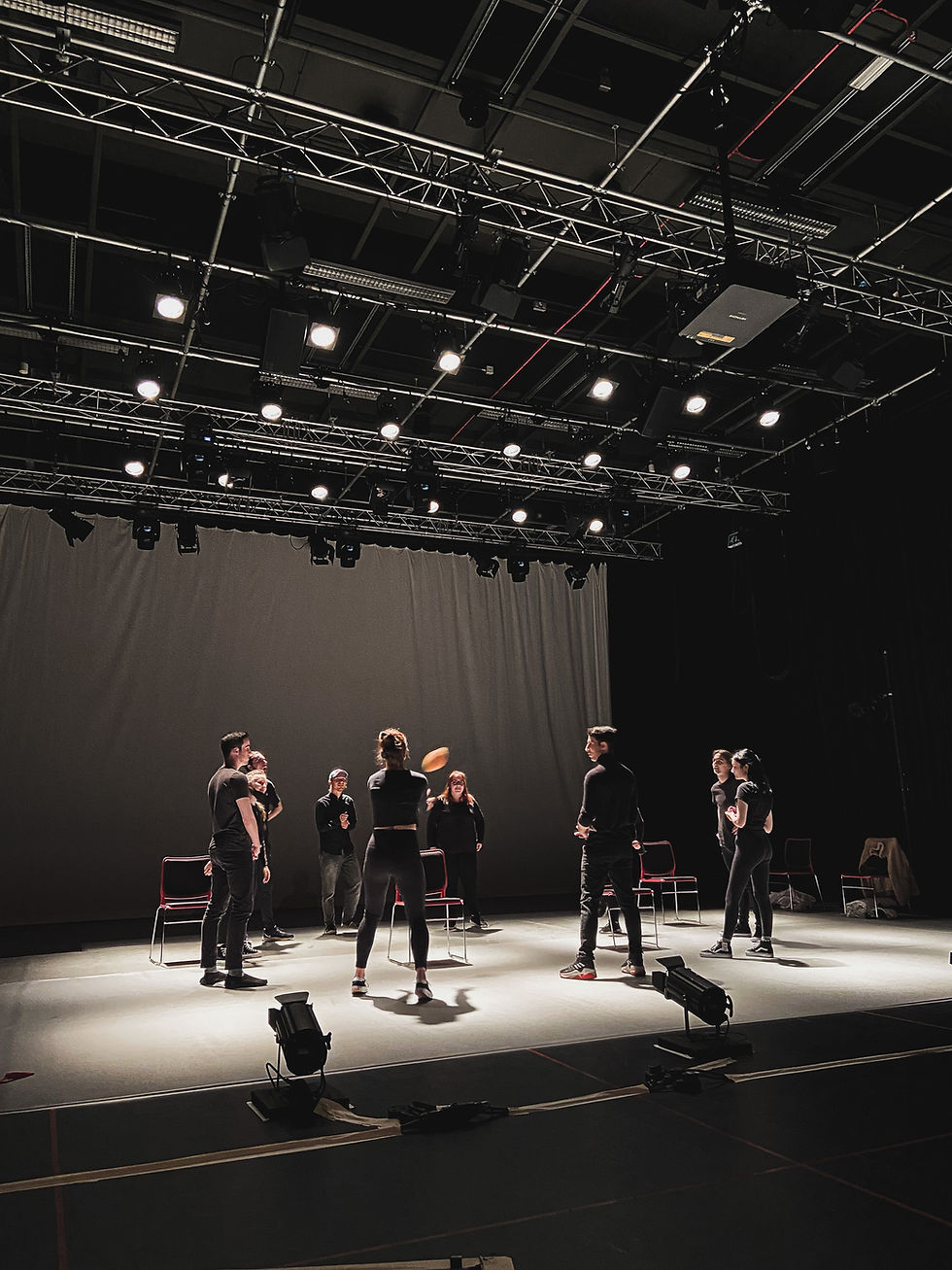Behind the Scenes of Theatre: Explore the Magic of Theatre-Making
- Creative Tree
- Jul 16
- 3 min read
Updated: Aug 8
Have you ever watched a play and wondered how everything comes together so perfectly – the acting, music, lighting, costumes, and even the way the actors switch characters in a flash?
That’s the exciting world of theatre-making and there’s much more going on than meets the eye!
Let’s go behind the scenes to discover how theatre is made…

What Is Theatre?
Theatre is storytelling brought to life — using voice, movement, music, and imagination.
It can happen on a big stage, in a classroom, or even outdoors. Some plays are funny, some are serious, and some don’t even use words!
Theatre is all about connection – between the performers and the audience, between characters, and between ideas.
Different Forms of Theatre
There’s no one way to “do” theatre! Let’s explore a few exciting types:
1. Conventional / Traditional Theatre
This is the most familiar kind of theatre – where actors perform a written script with clear characters, scenes, props, costumes, and a set on stage. It follows a structure with dialogue, plot, and often a beginning, middle, and end.
You might see:
A Western classic like Macbeth by William Shakespeare – filled with dramatic speeches, sword fights, and royal conflict.
An Asian traditional play such as Chinese opera or Japanese Noh theatre – which may use music, gesture, costume, and symbolic movement to tell ancient stories.
These performances often take place in formal theatre spaces, with the audience seated facing the stage.
2. Physical Theatre
Here, the story is told mostly through movement. The actors might dance, jump, lift each other, or move like animals or machines — all without saying a word!
3. Multimedia / Digital Theatre
Live acting mixed with technology! You might see video projections, animations, or digital effects alongside the performers.
4. Devised Theatre
Instead of one person writing a script, the whole group creates the story together during rehearsals — using improv, movement, and discussion.
5. Puppetry & Object Theatre
Puppetry is one of the oldest and most imaginative forms of theatre, where objects — from finely crafted puppets to everyday items — are transformed into living characters on stage.
In Singapore, companies like Paper Monkey Theatre and The Finger Players are well known for blending puppetry with storytelling and design. Their works often explore culture, identity, and history in creative and thought-provoking ways — appealing to both young and older audiences.
6. Site-Specific or Immersive Theatre
Theatre that happens anywhere — in a park, a stairwell, or a swimming pool! The audience often moves around or takes part in the story.
Who Makes Theatre Happen?
It takes a whole team to bring a story to life! Meet some of the behind-the-scenes heroes:
Playwright – Writes the script.
Director – Guides the vision and brings all the parts together.
Choreographer – Designs movement or dance scenes.
Sound Designer – Creates sound effects and chooses music.
Lighting Designer – Sets the mood using colour and brightness.
Set & Costume Designers – Build the world of the play and dress the characters.
Everyone works together like a puzzle – each piece is important.
How Does One Actor Play Many Roles?
One actor, multiple characters? Absolutely!
Here’s how actors do it:
Change voice – pitch, accent, speed
Use body language – tall posture for a king, wobbly knees for a scared child
Add a simple prop – a hat, glasses, or scarf
Quick costume changes – sometimes in seconds!
Theatre lets us become anything — and actors practise a lot to make every change believable.
Try It Yourself! Easy Theatre-Making Activities
Want to be a theatre-maker at home or in school?
Here are some fun ways to start:
Write a short script with a surprise ending
Create your own character using a hat and a funny walk
Make sound effects with things around the house
Tell a story using only your body – no words!
Team up with friends to put on a mini play





Comments